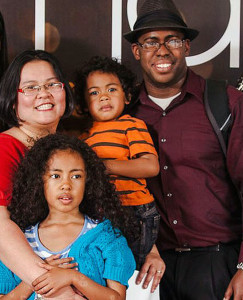 I am in Seoul, South Korea this week but was in Honolulu last week for the CALICO Conference on language learning and technology. Walking around Honolulu and seeing how people live prompted some thoughts about the relationship between housing styles/preferences and communication patterns. One of the things that struck me in riding around Honolulu on the bus was how open communication between strangers was. I noticed on a couple of occasions older Hawaiians striking up conversations with schoolchildren and, contrary to the reaction typical in many other U.S. cities, the children readily responding. Guess they didn’t get the message about not talking with strangers. The porous barriers between people is reflected in the housing styles in Honolulu where there is an open transition between indoors and outdoors. You see lots of furniture outside, including sofas, that would be a strange site in most North American cities. Hawaiians love to hang out on the lanai, which is a patio that serves as another room of the house. This is related of course to the wonderful year-round weather in Hawaii, but it struck me also as being in harmony with the casual communication style.
I am in Seoul, South Korea this week but was in Honolulu last week for the CALICO Conference on language learning and technology. Walking around Honolulu and seeing how people live prompted some thoughts about the relationship between housing styles/preferences and communication patterns. One of the things that struck me in riding around Honolulu on the bus was how open communication between strangers was. I noticed on a couple of occasions older Hawaiians striking up conversations with schoolchildren and, contrary to the reaction typical in many other U.S. cities, the children readily responding. Guess they didn’t get the message about not talking with strangers. The porous barriers between people is reflected in the housing styles in Honolulu where there is an open transition between indoors and outdoors. You see lots of furniture outside, including sofas, that would be a strange site in most North American cities. Hawaiians love to hang out on the lanai, which is a patio that serves as another room of the house. This is related of course to the wonderful year-round weather in Hawaii, but it struck me also as being in harmony with the casual communication style.
I think those thoughts came to me from watching while in Hawaii the German news reporting on the tornado in Moore, Oklahoma. There was disbelief on the part of the German reporter in Oklahoma and the news anchor that houses there were made of wood and had no storm shelters. There are no tornadoes in Germany (hence probably the intense interest by Germans in this exotic and frightening weather event) but if one roared across the Atlantic, German houses would be ready. They are built very securely and have heavy shutters with which to cover windows, with roofs covered in slate or ceramic tiles (not our flimsy roof tiles). German houses are self-sufficient islands of security, fenced off additionally from the outside world through tall hedges or fences surrounding the garden areas and house. Doors are closed and locked. When we exchanged houses a few years ago with a German family, my German colleague’s wife was quite upset that there were not locks on all the interior rooms. What a world of difference from Hawaii! And certainly riding on public transportation in Germany you rarely see the kinds of interactions among strangers I saw in Honolulu. Germans tend to be reserved in public, but quite open and friendly once you get to know them. Maybe the difference has more to do with the weather than anything else, but it is interesting to reflect on the mirroring of environment and communication.
On talking to the strangers, there is a very nice recent TED talk by Maria Bezaitis, “The surprising need for strangeness“








